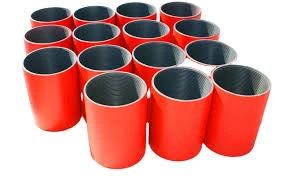- Afrikaans
- Albanian
- Amharic
- Arabic
- Armenian
- Azerbaijani
- Basque
- Belarusian
- Bengali
- Bosnian
- Bulgarian
- Catalan
- Cebuano
- Corsican
- Croatian
- Czech
- Danish
- Dutch
- English
- Esperanto
- Estonian
- Finnish
- French
- Frisian
- Galician
- Georgian
- German
- Greek
- Gujarati
- Haitian Creole
- hausa
- hawaiian
- Hebrew
- Hindi
- Miao
- Hungarian
- Icelandic
- igbo
- Indonesian
- irish
- Italian
- Japanese
- Javanese
- Kannada
- kazakh
- Khmer
- Rwandese
- Korean
- Kurdish
- Kyrgyz
- Lao
- Latin
- Latvian
- Lithuanian
- Luxembourgish
- Macedonian
- Malgashi
- Malay
- Malayalam
- Maltese
- Maori
- Marathi
- Mongolian
- Myanmar
- Nepali
- Norwegian
- Norwegian
- Occitan
- Pashto
- Persian
- Polish
- Portuguese
- Punjabi
- Romanian
- Russian
- Samoan
- Scottish Gaelic
- Serbian
- Sesotho
- Shona
- Sindhi
- Sinhala
- Slovak
- Slovenian
- Somali
- Spanish
- Sundanese
- Swahili
- Swedish
- Tagalog
- Tajik
- Tamil
- Tatar
- Telugu
- Thai
- Turkish
- Turkmen
- Ukrainian
- Urdu
- Uighur
- Uzbek
- Vietnamese
- Welsh
- Bantu
- Yiddish
- Yoruba
- Zulu
casing pup joint
Understanding Casing Pup Joints in Oil and Gas Operations
In the oil and gas industry, the terminology and tools used can often seem complex and daunting to those unfamiliar with the field. Among these important components are casing pup joints, which play a vital role in ensuring the efficiency and safety of drilling and casing operations. This article will explore what casing pup joints are, their significance, how they are made, and their applications in drilling operations.
What Are Casing Pup Joints?
Casing pup joints are short lengths of casing pipe that are typically used to make up the final connections in the drilling process. They are crucial components that help provide a proper seal and structural integrity to the wellbore. These joints are generally produced in various lengths, usually ranging from 2 to 10 feet, and can be customized based on project requirements. Casing is an essential component in the drilling process, acting as a protective lining for the wellbore to prevent the surrounding formation from collapsing and to isolate different pressure zones within the earth.
The Significance of Casing Pup Joints
Casing pup joints serve several important functions in oil and gas operations
1. Depth Adjustment One of the main purposes of casing pup joints is to fine-tune the depth of the casing string. This flexibility allows drilling teams to manage the wellbore more accurately without the need for cutting or changing out larger casing sections, saving both time and resources.
2. Connection Points They create connection points that help in assembling various sections of the casing string. This is particularly vital in deepwater or horizontal drilling where precise measurements and alignments are critical.
3. Load Distribution When a well is pressured or subjected to external forces, casing pup joints help distribute these loads, thereby enhancing the integrity of the entire casing system.
casing pup joint

4. Facilitating Operations These pup joints allow for easier handling and installation during the casing operation, thereby optimizing the overall drilling process. Their design often enables quicker connection and disconnection, which can be crucial during high-pressure operations.
Manufacturing Casing Pup Joints
Manufacturing casing pup joints involves a series of steps to ensure they meet the stringent industry standards and pressures they will encounter. Typically made from steel, these joints undergo a variety of treatments to enhance their durability and resistance to corrosion. The manufacturing process includes
- Cutting Steel pipes are cut into desired lengths, usually shorter than standard casing sections. - Threading The ends of the pup joints are often threaded to ensure a tight seal when connected to other casing sections. - Inspection Each pup joint undergoes rigorous testing for quality control, including non-destructive testing to identify any defects in the material. - Coating A protective coating may be applied to help defend against corrosive environments, especially in offshore drilling applications.
Applications in Drilling Operations
Casing pup joints are primarily utilized in the oil and gas drilling sectors but can also be found in applications involving geothermal drilling and other underground operations. They are especially beneficial in complex wellbore situations such as
- Deepwater Drilling In deepwater drilling, the precise placement of casing is essential. Casing pup joints provide an adjustable solution to achieve the correct depths. - Unconventional Reservoirs In scenarios where the geological formations are erratic, casing pup joints allow for flexibility in setup and adjustment. - Horizontal Drilling The use of short casing joints enables operators to navigate challenging terrains and achieve desired angles without compromising well integrity.
Conclusion
Casing pup joints may be small in size, but their contributions to the oil and gas industry are monumental. By allowing for precise adjustments in casing depth, ensuring safe connections between casing sections, and enhancing operational efficiency, these components are integral to successful drilling operations. As technology advances and the necessity for innovative drilling solutions grows, the importance of casing pup joints will continue to rise, firmly rooting them in the machinery of modern oil and gas exploration. Understanding their role helps underscore the intricate balance of engineering, safety, and efficiency that characterizes the industry today.
-
Tubing Pup Joints: Essential Components for Oil and Gas OperationsNewsJul.10,2025
-
Pup Joints: Essential Components for Reliable Drilling OperationsNewsJul.10,2025
-
Pipe Couplings: Connecting Your World EfficientlyNewsJul.10,2025
-
Mastering Oilfield Operations with Quality Tubing and CasingNewsJul.10,2025
-
High-Quality Casing Couplings for Every NeedNewsJul.10,2025
-
Boost Your Drilling Efficiency with Premium Crossover Tools & Seating NipplesNewsJul.10,2025







